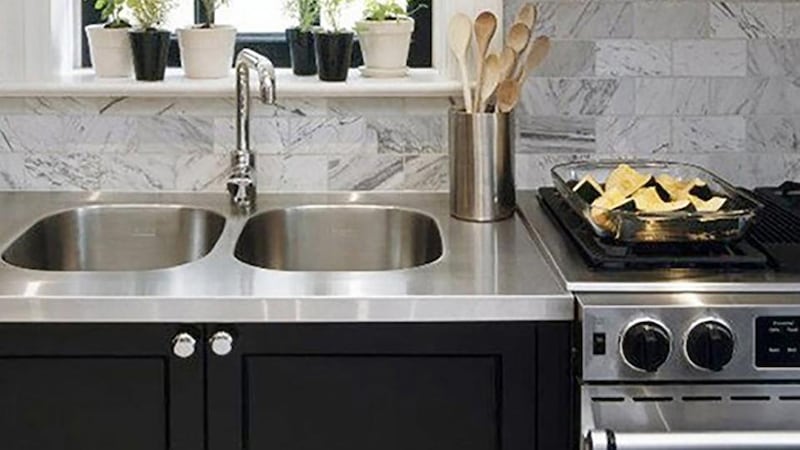The worktop you choose will set the tone for your kitchen. Your choice will come down to how durable you need your worktop to be, how much you’re prepared to look after it, and the amount you have to spend.
Depending on what you choose, the price will vary quite a bit. At the higher end of the spectrum are the man-made surfaces of which there are two varieties – the composites which are made with a mix of 33 per cent acrylic resin and 66 per cent natural materials, and the engineered stone which is made with a higher percentage of crushed quartz, typically 96 per cent, mixed with resin.
Both of these materials are extremely robust, hygienic and easy to keep and come in a huge range of colours. The composite material can be formed into any shape due to the large amount of resin and is ideal for very long worktops as almost invisible seams can be achieved.

Stone is a little less costly than the man-made alternatives and granite is probably the most popular choice because it is so hard-wearing and naturally heat resistant. Marble is another popular choice and there are some stunning varieties available but it is more porous than granite so will need to be looked after.
You need to be particularly careful of things like red wine and citrus juice which can stain the surface. Marble is also a very practical choice for anyone who does a lot of cooking. It is naturally heat absorbing, so feels cool to the touch and is the perfect surface for making pastry as it prevents the dough from sticking.
Stainless steel has become increasingly popular thanks to the industrial interiors trend. It is very robust and can be formed into any shape and size of worktop, with integrated sinks and splashbacks. It does require a bit of work to keep it looking its best though, as it tends to show grease and finger marks. It also scratches fairly easily, although light marks can be burnished out.
Heat-resistant
Glass has been a popular choice for splashbacks for a number of years now but is also a great option for countertops and is well-suited for a more contemporary style of kitchen. It is available in almost any colour and is heat-resistant to 400 degrees. It does come in specific sizes so joints will be visible for longer counter tops.
Timber is a less expensive option for countertops and is a very popular choice because of the aesthetic warmth it brings. Iroko is a great choice for a kitchen worktop as it has a closed grain and an inherent oiliness, making it more durable than other timbers.
All timbers will need to be oiled a couple of times a year to keep them looking and functioning well. Do bear in mind that all timbers will tend to scratch and stain and water can cause problems.
Laminate is by far the most cost-effective choice. They have come a long way in the past 20 years.
Some of the laminates the German factories are producing realistically mimic other materials, including wood and granite and are also available in any shape or colour, making laminate a fantastic alternative to quartz at a fraction of the cost.
And finally don’t rule out mixing two materials, a marble slab incorporated into a wooden worktop for example can work really well. Different materials serve different culinary purposes so combining them can be a practical thing to do.











